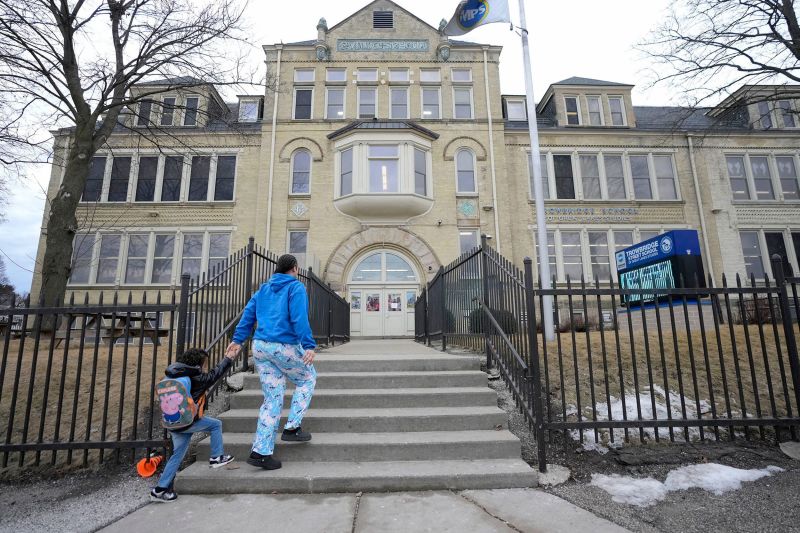
Milwaukee announced Monday the temporary closure of two more schools as the city works to address a lead crisis in its public schools.
The district is also presenting an updated plan to tackle the flaking and chalking paint in aging buildings that’s suspected to be the cause of elevated blood lead levels in four students this year.
The new school closures impact elementary schools, Westside Academy, and the Brown Street School. Two other elementary schools also remain closed: Starms Early Childhood Education Center and LaFollette School. In total, the Milwaukee public school district has announced the closure of nine schools so far this year to address lead hazards.
The city’s school district and health department are in the process of inspecting nearly 100 buildings in the district that were built before 1978, the year lead was banned from paint. They expect the work to continue through the summer.
The new lead plan outlines the process the district will follow to assess and remediate its schools. It starts with a visual inspection of each building, and based on that, the building will be classified as low, medium or high risk. Schools at medium and high risk will receive additional testing for lead and could be subject to full or partial closures for abatement. It also says the schools are developing a plan to test adults that might be exposed to lead in schools, such as custodians.
The city has also trying to screen more students for lead in their blood. They had been working with the US Centers for Disease Control and Prevention on a testing strategy when the agency’s Lead Poisoning Prevention Program was cut, leaving the city without federal help.
The CDC also denied the city’s request for EpiAid, a short-term loan of epidemiologists to help guide and staff their response. Denials of EpiAid requests are rare but have happened in the past if the program doesn’t think it can meet the requestor’s needs, said Dr. Eric Pevzner, chief of the CDC’s epidemiology and laboratory branch and its Epidemic Intelligence Service.
“Obviously, in this case, we no longer had the expertise at CDC to support that request,” Pevzner said in an interview.
Last week, Wisconsin Sen. Tammy Baldwin and Rep. Gwen Moore, both Democrats, sent a letter to US Department of Health and Human Services Secretary Robert F. Kennedy Jr., urging him to reinstate the CDC’s lead experts.
“You have the ability to immediately rectify this issue, and we urge you to do so,” they wrote.
The crisis was discovered after a child tested positive for a high level of lead in their blood late last year. An environmental inspection found no significant sources of lead in the child’s home or in relatives’ homes, but did find peeling lead paint in a basement bathroom in the child’s school. They also found high levels of lead in the dust around windowsills and floors.
The city of Milwaukee, which has a large share of older homes, has a long history of lead problems. In some areas on its north side, health department data show about 1 in 5 children tested positive for elevated blood lead levels between 2018 and 2021.
The current crisis, however, is the first time lead poisoning in kids has been linked to the city’s schools.
One of the most cost-effective ways to control lead exposure from old paint is to keep it sealed it under paint. The school district had fallen behind in its efforts to do that.
In a report to the state legislature last year, the district disclosed more than $265 million in deferred maintenance for its schools.
So far, three other children in the district have also been found to have elevated levels of lead in their blood.
Typically, babies are tested for lead through finger-prick blood tests in the doctor’s office at 1 or 2 years of age. That screening doesn’t typically extend to school-age kids.
The Milwaukee Public School District and the Milwaukee Department of Health have recommended that kids in the district see their doctor for screening, and they’ve also hosted some school-based clinics to make the testing more convenient for families. The next lead screening clinic is scheduled for May 7.
The health department had hoped to do more of these with the CDC’s help but says it will continue to do as much as it can with the resources it has.
